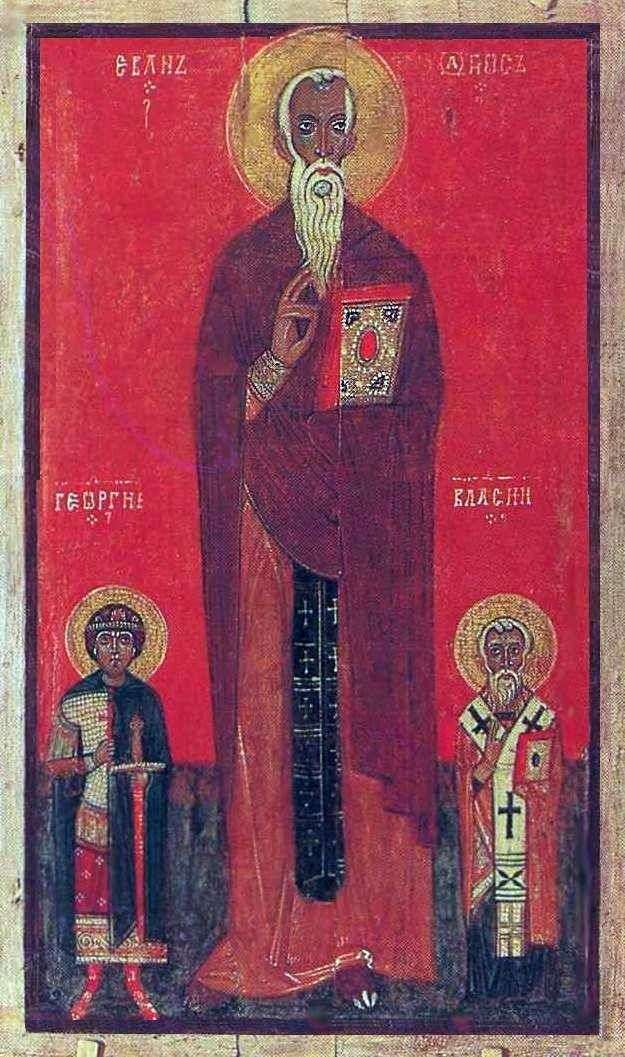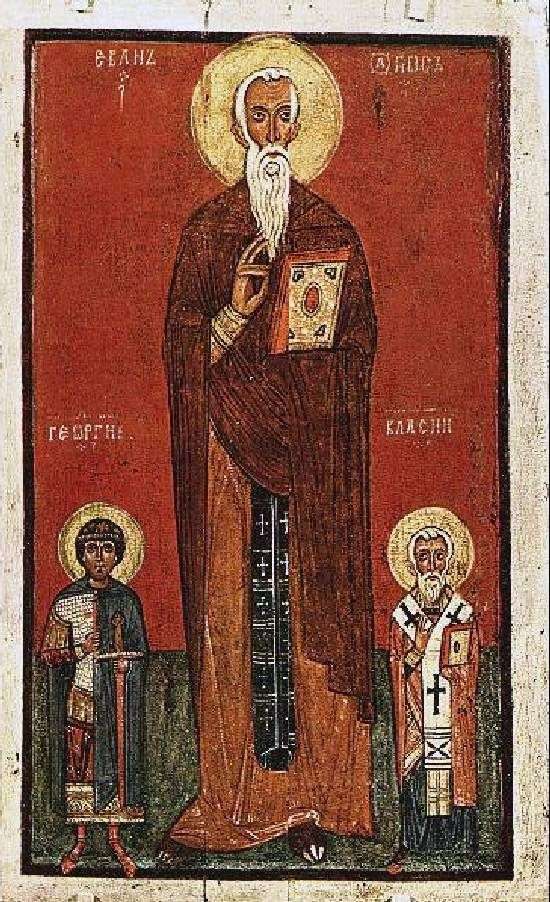
The Mongol-Tatar invasion interrupted the development of Old Russian painting, which experienced a period of flourishing in the 12th – early 13th centuries. Only in the Novgorod, which preserved its independence, did the cultural life continue.
In the conditions of constant wars, with the weakening of ties with Constantinople and Southern Rus, an original art that is close to the people’s world perception is formed here. The composition of the icon “John Climacus, George and Vlasius” is unusual.
The central figure of John is incommensurably greater than the lateral ones – the warrior-martyr George and Bishop Vlasius. Variety is a typical for medieval art reception of the hierarchical highlighting in the composition, but usually the figures of saints, icons of the same name, were written on the margins.
The Novgorod artist places the patronal images of George and Vlasy in the middle section, bringing them closer together, and emphasizing the importance of the latter. The impression of the grandiose physical height produced by the figure of John was supposed, according to the idea of the icon’s creator, to “raise the mind” to the heights of the virtues of this Sinai hegumen who described in the book “Ladder” the path of spiritual ascent to perfection.
The artistic structure of the icon is simple, the images are treated unambiguously, do not require in-depth contemplation, but the power of their impact is impressive.
Fixed, flat, outlined by the mean angular contour of the figure, are illuminated from within with a special light, materialized in the cinnamon glow of the background. Bright white engines around the eyes seem to be flashes of unearthly light. In faces it is easy to recognize a national, even common people type. The monument expresses the high spiritual potential of art that responded to the tastes of the democratic sections of the population “Lord Novgorod the Great”
 Saints John Climacus, George, Vlasy
Saints John Climacus, George, Vlasy John Climacus, George et Blasius
John Climacus, George et Blasius John Climacus, George y Blasius
John Climacus, George y Blasius Saints John Climacus, George, Vlasius
Saints John Climacus, George, Vlasius San Juan de la Escalera, George, Blasius
San Juan de la Escalera, George, Blasius The miracle of St. George about the serpent, with 9 hallmarks of the holidays
The miracle of St. George about the serpent, with 9 hallmarks of the holidays John the Theologian in silence, with a life in 12 hallmarks
John the Theologian in silence, with a life in 12 hallmarks The miracle of St. George about the serpent, with Paraskeva on Friday and St. Nicholas the Wonderworker in the fields
The miracle of St. George about the serpent, with Paraskeva on Friday and St. Nicholas the Wonderworker in the fields